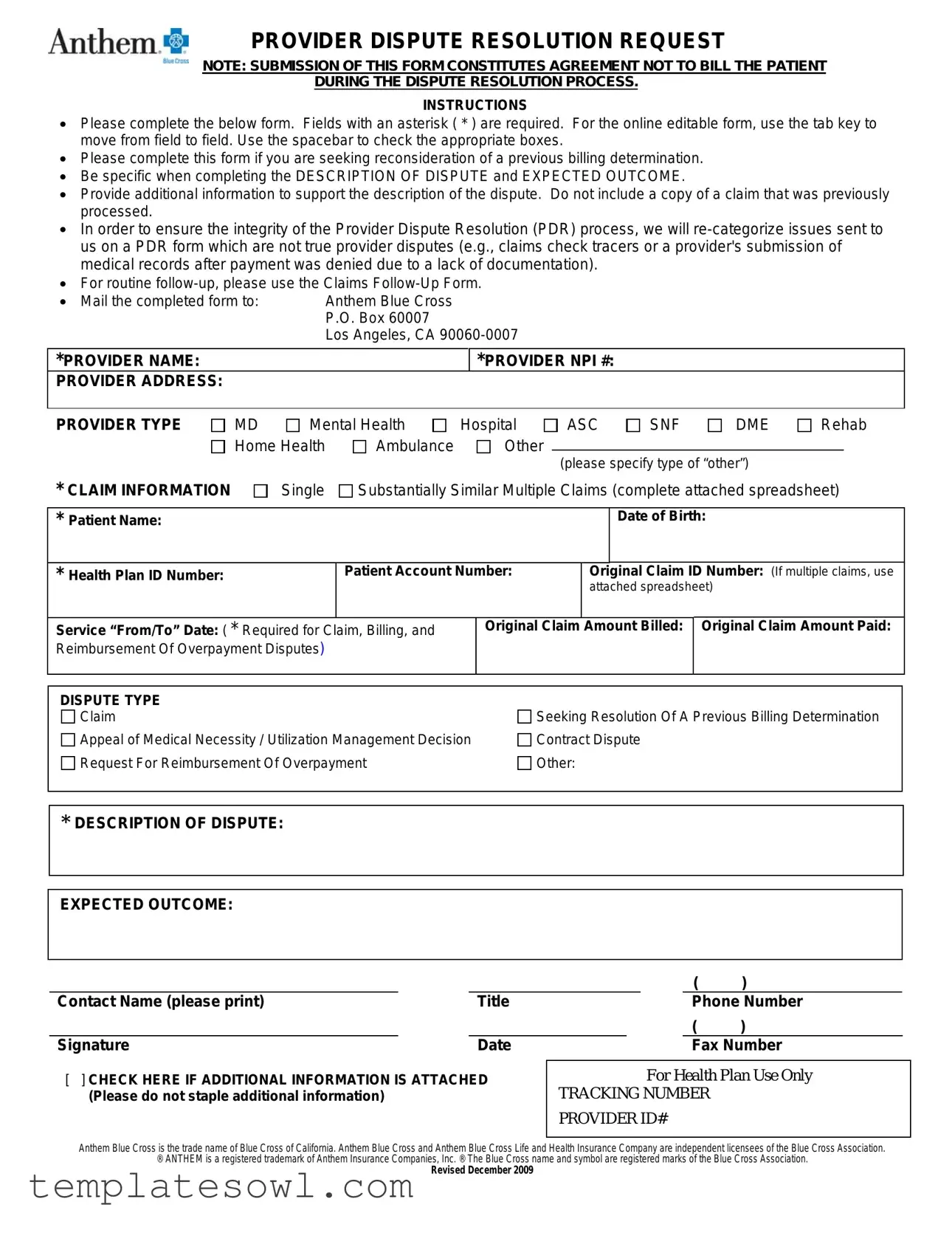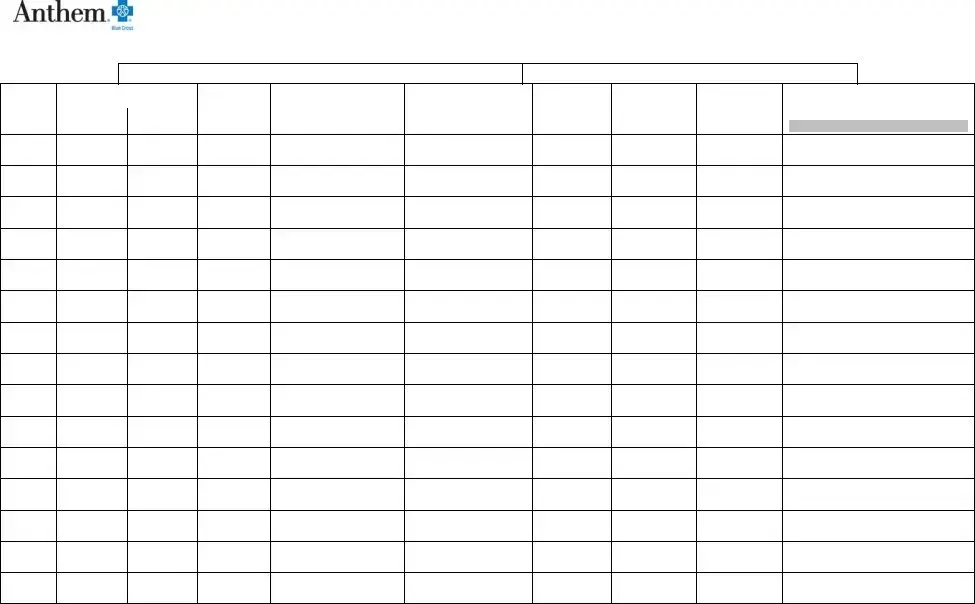What is the Provider Dispute Resolution Request form?
The Provider Dispute Resolution Request form is used by healthcare providers to formally request a review of a previous billing decision made by an insurance company. This process allows providers to seek reconsideration without billing the patient during the resolution process.
Who should fill out this form?
This form should be completed by healthcare providers who wish to dispute a billing determination. Whether you are a doctor, mental health provider, or run a hospital, this form is relevant if you disagree with the payment decision by Anthem Blue Cross.
What information do I need to provide on the form?
You'll need to provide details about the provider, including your name, NPI number, and address. You'll also need patient information like their name, date of birth, and Health Plan ID number. The specific details about the claim and the nature of the dispute must be included as well.
What is meant by 'Description of Dispute' and 'Expected Outcome'?
The 'Description of Dispute' section is where you explain why you think the previous decision was incorrect. Be clear and specific. The 'Expected Outcome' is where you outline what resolution you are seeking, whether it's a reprocessing of the claim or an adjustment to the payment amount.
Can I include a copy of the processed claim?
No, you should not include a copy of the claim that was previously processed. Instead, provide additional supporting information that could help clarify the dispute described on the form.
What happens if I submit an issue that is not a true provider dispute?
If the issue submitted does not qualify as a true provider dispute, the request will be re-categorized. For example, claims check tracers or issues about submitting medical records may not meet the criteria for a dispute.
How do I submit the completed form?
Once you have filled out the form, send it by mail to Anthem Blue Cross at the specified address: P.O. Box 60007, Los Angeles, CA 90060-0007. Make sure to check that all required fields are completed before mailing.
What should I do if I have multiple claims to dispute?
If you have multiple claims that are similar and tied to the same dispute, you should complete an attached spreadsheet to provide all necessary details for each claim. Include the claim ID numbers and any other relevant information as required.
Is there a cost associated with submitting this form?
No, there is no cost to submit the Provider Dispute Resolution Request form. Submitting this form signals that you will not bill the patient while the dispute is being resolved, ensuring they are not financially impacted during this process.
What happens after I submit the form?
Once the form is submitted, Anthem Blue Cross will review your dispute. They will then provide a response regarding the resolution of your request. You will be notified of their decision, allowing you to take further steps if necessary.


